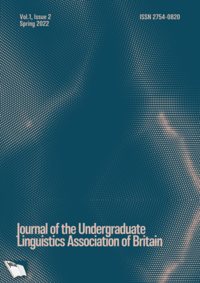Revitalising Kanyen’kéha on the Grand River: A Case Study of Indigenous Language Revitalisation and its Theoretical Implications
Abstract
In this work, I investigate a case study of language revitalisation involving the adult immersion school Onkwawén:na Kentyóhkwa (OK), which is located in Ohswé:ken along the Grand River (Ontario), and where the Northern Iroquoian language Kanyen’kéha (Mohawk) has been taught as a second language since 1999. I focus on three major aspects. First, I look at the different arguments that have been proposed in favour of and against language revitalisation, and how they relate to the motivations underlying the OK project. Second, I analyse the challenges involved in teaching a polysynthetic Iroquoian language to native English speakers, especially in terms of morphological complexity and discourse patterns. Third, I present the main strategy that has been implemented by the school to engage with these challenges, a morpheme–based teaching technique called the ‘Root Word Method’ (RWM), before considering its theoretical implications. I tentatively argue that the paradox between the pedagogical usefulness of the morpheme, as suggested by the success of the RWM, and the fact that L1 speakers probably process some morphological structures in terms of the abstractive approach is illusory, because the pedagogical efficiency of the constructive approach in L2 acquisition is logically independent from the issue of its psychological adequacy in accounting for L1 competence. I conclude by suggesting that these interesting implications of a case study of language revitalisation for significant issues in modern linguistic theory, such as the constructive–abstractive debate in morphology, provide a good example of the value of applied linguistics projects to theoretical linguistics.

Published
Issue
Volume 1 (Issue 2)DOI
Permalink
- This work is licensed under a Creative Commons Attribution 4.0 International License.
